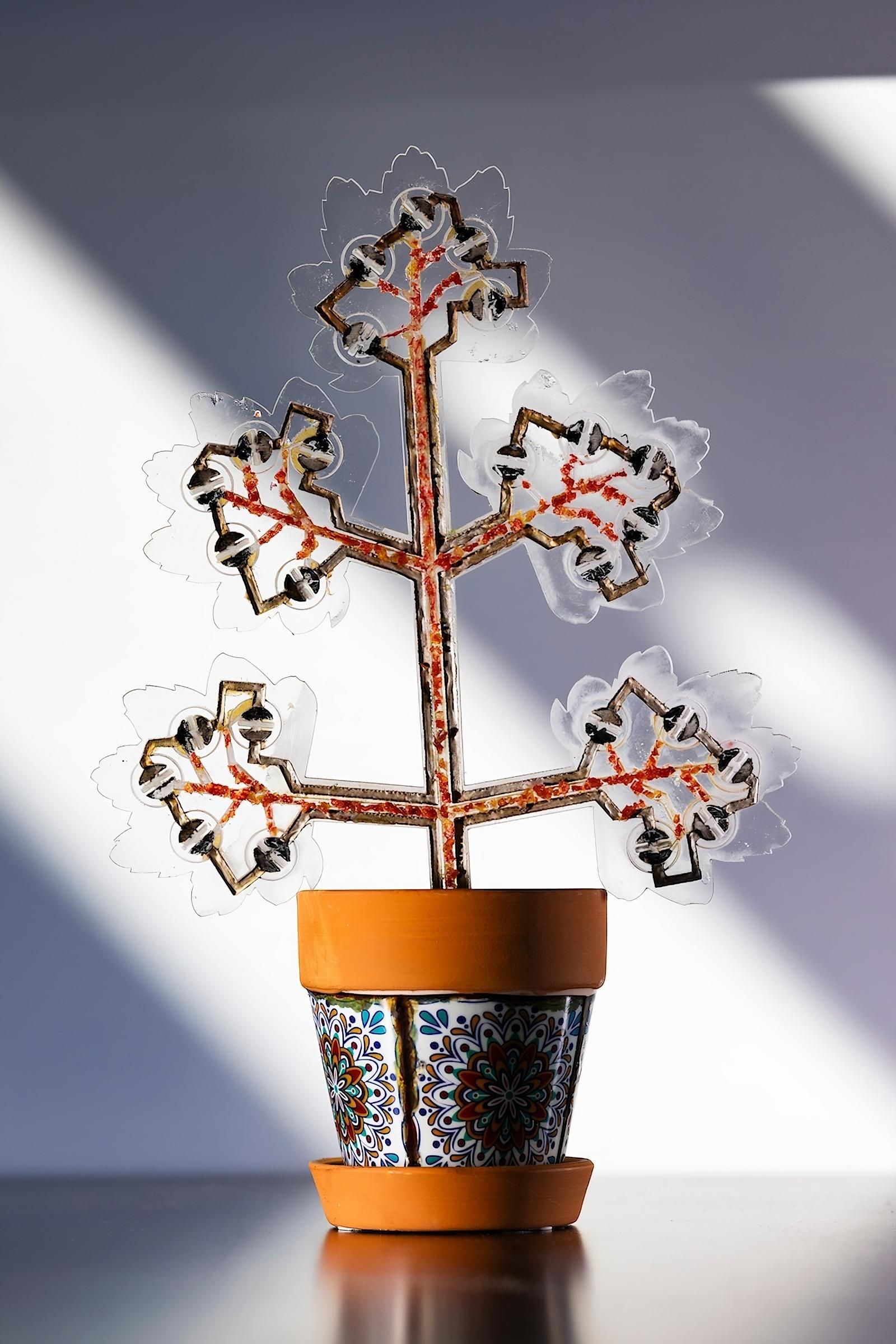This artificial plant purifies the air much more efficiently than a natural plant
Published by Cédric,
Author of the article: Cédric DEPOND
Source: Advanced Sustainable Systems
Other Languages: FR, DE, ES, PT
Author of the article: Cédric DEPOND
Source: Advanced Sustainable Systems
Other Languages: FR, DE, ES, PT
Follow us on Google News (click on ☆)

The artificial plants developed at Binghamton University use indoor light to boost photosynthesis, which reduces carbon dioxide levels by 90%, much more than the 10% reduction observed with natural plants.
Photo credit: Jonathan Cohen.
This intriguing device, resulting from work at Binghamton University, consists of artificial leaves integrating biological solar cells. Experiments show that this synthetic plant can reduce carbon dioxide (CO2) levels by 90% in a room, a feat far superior to the capabilities of natural plants.
The scientists observed that, under the effect of ambient light, photosynthesis is stimulated, producing oxygen and electricity from CO2. Indeed, the results indicate a drop in CO2 levels, from 5,000 to 500 parts per million, an impressive outcome that raises questions about the future of indoor air purification.
The five leaves of this plant operate thanks to cyanobacteria, present in aquatic ecosystems. These living organisms convert CO2 and water into oxygen. The process of photosynthesis, which is at the heart of how this device functions, is therefore quite real. However, the electricity produced, although secondary, reaches 140 microwatts, insufficient for energy-hungry devices but enough to recharge a smartphone.
Indoor air quality has become a major issue, especially after the COVID-19 pandemic. Researchers point out that 90% of the global population breathes polluted indoor air, an alarming finding. Conventional air purification systems, often costly and complex, are in need of new alternatives.

a) The artificial plant converting captured CO2 into O2 and bioelectricity during photosynthesis.
b) The artificial plant using indoor light, water, and nutrients to convert CO2 into O2, thereby improving indoor air quality.
c) A photo of the plant's artificial leaf, showing five biosolar cells attached to a stem. The cells are electrically connected outside the stem, which transports fluids.
d) A schematic illustration of the biosolar cell, composed of an anode infused with cyanobacteria, a cathode, and an ion exchange membrane. Electrogenic cyanobacteria produce electricity during photosynthesis. (AC: Activated Carbon).
Enhancing the diversity of bacteria used could increase the efficiency of this device. Researchers plan to select the most suitable species to optimize the process. Future versions of this plant could also integrate water and nutrient supply systems.
The potential applications of this innovation are numerous. By reducing CO2 and generating energy, this type of plant could easily fit into our homes. The benefits are clear, with an improvement in indoor quality of life.